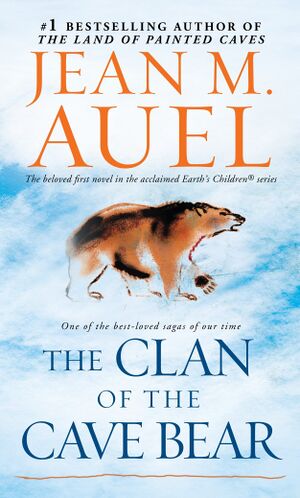The Clan of the Cave Bear, authored by Jean M. Auel, emerges as a pivotal work in the realm of prehistoric fiction, marking a paradigm shift in both narrative construction and cultural representation. This novel, published in 1980, delves into the life of Ayla, a young girl of the Cro-Magnon species, and her experiences with the Neanderthal clan that adopts her following the death of her family. To comprehend the profound impacts of this book, it is essential to dissect its narrative intricacies and the perspectives it offers through the lens of cultural relativism.
The genesis of Auel’s work predated a burgeoning interest in anthropology, wherein the distinctions between species, particularly the Cro-Magnon and Neanderthals, became focal points of study. Auel’s meticulous attention to anthropological detail facilitated an authentic representation of prehistoric life, thereby engaging readers in a narrative steeped in both realism and imagination. The meticulous research behind the novel imbues it with a sense of authenticity, transporting readers into a meticulously constructed world where survival, kinship, and cultural divergence are profoundly explored.
Auel artfully constructs the character of Ayla, endowing her with traits that not only humanize her but also render her a lens through which readers may explore the varying cultural practices of prehistoric peoples. Unlike traditional portrayals that often depict Neanderthals as brutish and simplistic, Auel offers a nuanced depiction, showcasing their complexity and resilience. This deviation from stereotype encapsulates the essence of cultural relativism, urging readers to assess behaviors and customs through the prism of their socio-historical context rather than contemporary biases.
The intricacies of the clan’s societal structure emerge as a tapestry woven from differing traditions, rituals, and belief systems. Ayla’s struggle for acceptance within the clan illuminates the conflicts inherent in cultural assimilation and identity. Her journey underscores the tension between differing cultural frameworks, emphasizing the need for understanding and respect in cross-cultural exchanges. The narrative challenges readers to confront their preconceptions, fostering a sense of empathy towards beings categorized as ‘other’ in the anthropological discourse.
A pivotal moment within the narrative occurs when Ayla’s innovative spirit clashes with the clan’s traditional methods, showcasing the friction between progress and tradition. Her use of tools—crafted from materials such as stone and bone—highlights human ingenuity while simultaneously unveiling the clan’s adherence to age-old customs. This dynamic interplays with the broader themes of survival and adaptability, central tenets in the study of human evolution. In a sense, Auel implores readers to ponder the implications of innovation within static cultural frameworks.
The prose of The Clan of the Cave Bear also serves to engage the reader’s curiosity and critical thinking. Auel’s descriptive passages offer a visceral understanding of the environmental challenges faced by early humans, fostering a profound appreciation for the symbiotic relationship between humans and their surroundings. The natural world, portrayed almost as a character in itself, provides an illustrative backdrop that underscores the omnipresent struggle for survival. The author’s vivid descriptions of flora and fauna ground the narrative, further enhancing its authenticity.
Auel’s focus on female agency is another vital dimension that demands attention. In an era dominated by male narratives, Ayla emerges as a formidable protagonist, embodying resilience and determination. Her evolution from a socially ostracized outlier to an empowered individual encapsulates the journey of self-discovery. This portrayal invites discourse surrounding gender roles and the potential for women to transcend societal limitations, fostering a conversation relevant to contemporary discussions on feminism.
The thematic exploration of spirituality within the clan also warrants examination. Auel intricately weaves a fabric of beliefs that dictate the clan’s interactions with the natural and supernatural realms. Rituals, derived from animistic traditions, illustrate the clan’s reverence for the earth and its creatures, offering a contemplative perspective on humanity’s connection to nature. This spiritual dimension provides a counterpoint to the empirical frameworks often emphasized within anthropological studies, advocating for a more holistic understanding of prehistoric human experience.
The conclusion of The Clan of the Cave Bear, while not providing a definitive closure, allows for contemplation and speculation. Auel positions Ayla at the crossroads of two distinct cultural identities, facilitating an exploration of belonging and the search for home. By leaving readers to ponder the next chapter of Ayla’s life, the narrative instills a sense of curiosity, urging further inquiry into the lives of prehistoric peoples.
Ultimately, The Clan of the Cave Bear redefines the genre of prehistoric fiction, merging thorough research with imaginative storytelling. Through its nuanced characters and rich cultural tapestry, the novel exemplifies the principles of cultural relativism, urging readers to extend their understanding beyond traditional narratives. As a catalyst for discussions surrounding identity, gender, and environmental interdependence, Auel’s work continues to resonate, beckoning a deeper understanding of the human experience across the ages.
